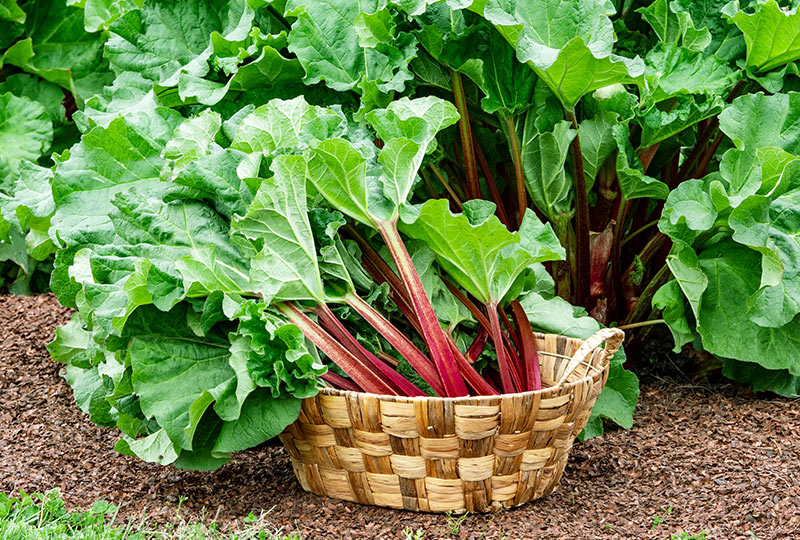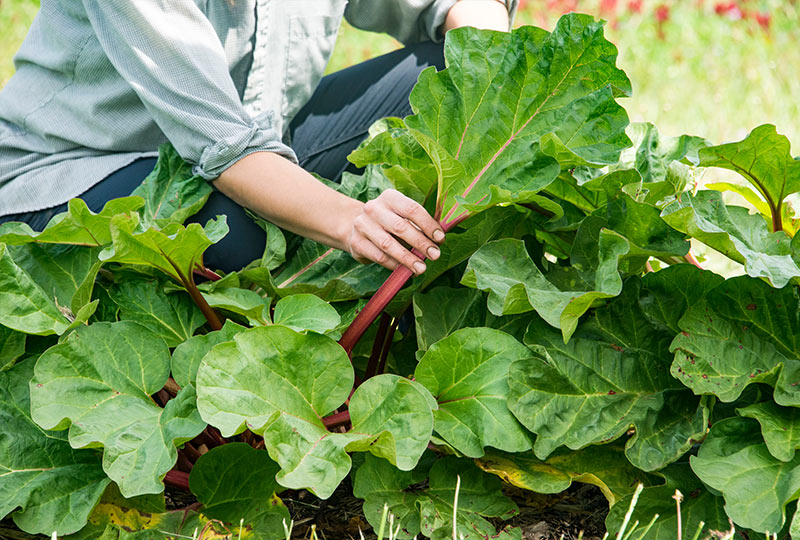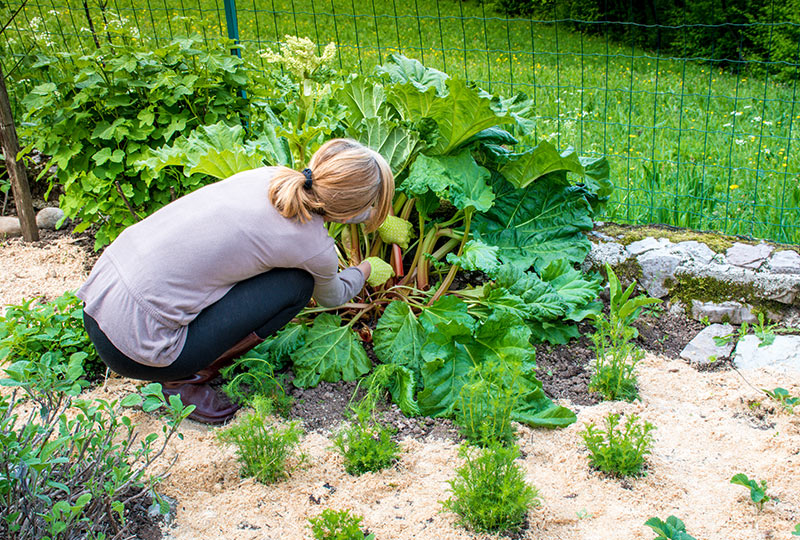How to Grow Rhubarb

Rhubarb is one of the few perennial vegetables, providing a yearly harvest with minimal maintenance. Known for its tart flavor, rhubarb can be used in various recipes and grows productively for a decade or longer. With the right care, it can become a long-lasting, fruitful addition to your garden.
Planting Rhubarb

Rhubarb is typically grown from root divisions rather than seeds, as this method establishes plants more reliably.
1. Site Selection:
Choose a sunny location with fertile, well-drained soil. While rhubarb can tolerate partial shade, full sun encourages better growth and productivity. Plan carefully, as rhubarb plants grow large and require ample space.
2. Soil Preparation:
Rhubarb thrives in rich, well-drained soil with a pH between 6.0 and 6.8. Before planting, work compost or well-rotted manure into the soil to provide essential nutrients for healthy growth.
3. Planting Divisions:
Plant rhubarb divisions in early spring, spacing plants about 3 feet apart to allow room for spreading. Position the crowns 3-4 inches below the soil surface and water them thoroughly after planting.
Growing Rhubarb

Once planted, rhubarb requires minimal upkeep but benefits from regular watering, feeding, and cultivation.
1. Watering and Fertilizing:
Rhubarb needs consistent moisture, especially during its first year. Water deeply and regularly, especially in dry spells, to keep the soil evenly moist but not waterlogged. Feed the plants with a balanced fertilizer each spring and, if possible, side-dress with compost or manure to provide additional nutrients.
2. Mulching and Weed Control:
Apply a layer of mulch around the plants to help retain moisture and suppress weeds. Mulching also aids in stabilizing soil temperatures, especially helpful in regions with extreme temperature changes.
3. Dividing Rhubarb:
Every few years, consider dividing rhubarb plants in early spring or late fall to rejuvenate growth. To divide, dig up the plant, separate it into sections with at least one crown and several buds, and replant in fresh soil.
Harvesting Rhubarb

Rhubarb stalks can be harvested in the second year after planting. Follow these guidelines for optimal harvests:
1. Harvesting Season:
Harvest rhubarb in a 6-week period from early spring until early summer. This helps the plants build energy reserves for the next year's growth. Avoid harvesting all stalks at once, as this can weaken the plant.
2. Harvesting Method:
To harvest, grasp the stalk near the base and gently twist it out of the ground, or cut it cleanly at the soil line. Harvest stalks that are at least 12 inches long and avoid harvesting any during the plant's first year.
3. Rhubarb Usage:
Rhubarb's tart flavor complements desserts, jams, and beverages. Popular uses include rhubarb pie, crumble, and jam. It pairs exceptionally well with strawberries and apples, adding a unique taste to these fruits.
Rhubarb Care and Maintenance

Rhubarb is hardy and low maintenance once established. However, keep an eye out for common pests and diseases, such as crown rot. Regularly remove weeds and monitor plants for any signs of distress.
With minimal care and patience, rhubarb can reward gardeners with abundant harvests year after year. Proper site selection, planting, and care practices can ensure a productive rhubarb patch for many seasons.





 Gardens Alive! & Supplies
Gardens Alive! & Supplies






